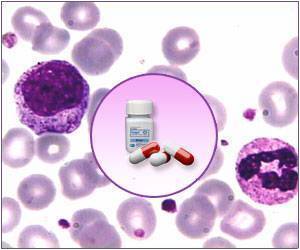Exon skipping treatment eliminates trafficking of the immunoglobulin IgE receptor to the surface of mast cells, making the cells unresponsive to allergies.
Highlights
- Allergic responses are driven by mast cells and basophils.
- Most allergy treatments focus on stopping the effects of histamine or on dampening the body's overall immune response by use of steroids.
- This approach is not totally effective.
- New approach aims at eliminating the immunoglobulin E (IgE) receptor on the surface of mast cells to stop allergic reaction.
Allergic reactions are driven by mast cells and basophils - types of inflammatory cells found in tissues and the bloodstream, respectively, that function as part of our immune system.
When body comes into contact with an allergen, immunoglobulin E (IgE) specific to that allergen acts through its receptor on the mast cell, stimulating the mast cells and basophils to release mediators, such as histamine, that trigger an allergic response.
Currently, most allergy treatments focus on either stopping the effects of histamine and other mediators or on dampening the body's overall immune response by use of steroids.
Unfortunately neither approach is totally effective, and in the case of dampening the immune response, can have significant drawbacks.
Cruse and Metcalfe looked at a gene called MS4A2, which is only expressed in mast cells and basophils, and is responsible for forming the IgE receptor on the mast cell.
The cell's DNA remains unaffected.
When the exon targeting therapy is stopped, the protein blocked by exon skipping is made again.
Cruse and Metcalfe tested their therapy on mast cells in vitro - where it eliminated activation of mast cells by allergen - and against allergic dermatitis in vivo, using a mouse model. Their results in vivo showed a marked reduction in the allergic dermatitis response in the mice.
"By eliminating the expression of the IgE receptor on the surface of mast cells, we have identified an innovative and targeted approach with the potential to treat allergic inflammation in millions of patients worldwide.”says Cruse.
Due to the specificity of approach for mast cells and basophils, it should have significant advantages over current therapies.
Though the findings are very promising, researchers are still in the early stages of developing this therapeutic approach.
The research appears in Proceedings of the National Academy of Sciences. Funding was provided by the NIH Division of Intramural Research of NIAID and NHLBI.
Source-Medindia











